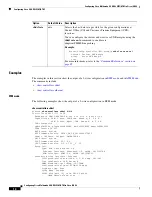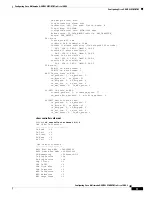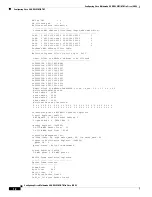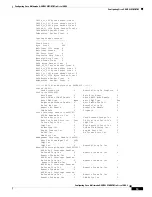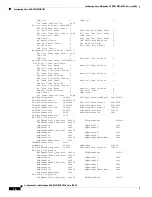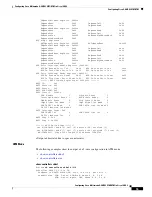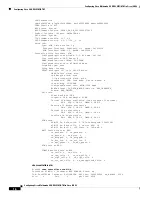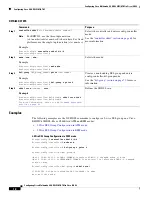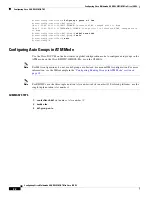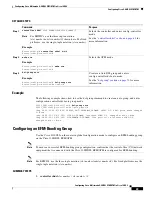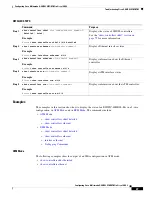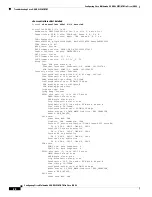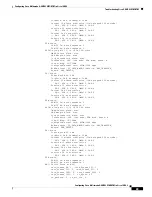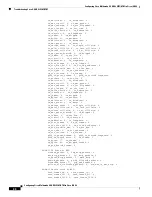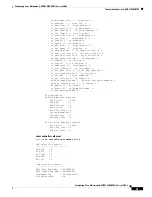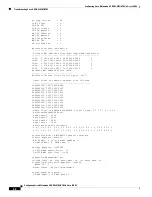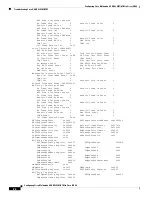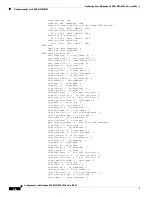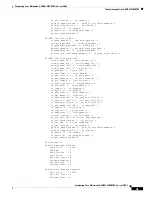
Configuring Cisco Multimode G.SHDSL EFM/ATM in Cisco ISR G2
Configuring Cisco G.SHDSL EFM/ATM
24
Configuring Cisco Multimode G.SHDSL EFM/ATM in Cisco ISR G2
2.
mode efm
3.
dsl-group
DSL_group_number
pairs
link
efm-bond
4.
shdsl rate
{
number
|
auto
}
DETAILED STEPS
Examples
The following example uses the G.SHDSL commands to configure an efm-bonding group on a Cisco
EHWIC-4SHDSL-EA.
Router(config)#
controller shdsl 0/2/0
Router(config-controller)#
mode efm
Router(config-controller)#
dsl-group 0 pairs 0 efm-bond
Router(config-controller-dsl-group)#
*Oct 1 10:49:03.331: %LINK-3-UPDOWN: Interface Ethernet0/2/0, changed state to down
*Oct 1 10:49:04.331: %LINEPROTO-5-UPDOWN: Line protocol on Interface Ethernet0/2/0,
changed state to down
Router(config-controller-dsl-group)#
shdsl rate 2048
Router(config-controller-dsl-group)#
exit
Router(config-controller)#
exit
Router(config)#
Command
Purpose
Step 1
controller shdsl
slot number/subslot number/0
Note
For EHWICs, use the three-tuple notation
(
slot number/subslot number/0
) shown here. For fixed
platforms, use the single-tuple notation (
slot number
).
Example
:
Router (config)#
controller shdsl 0/2/0
Router (config-controller)#
Selects the controller and enters config-controller
mode.
See the
“controller shdsl” section on page 68
for
more information.
Step 2
mode efm
Example
:
Router (config-controller)#
mode efm
Router (config-controller)#
Selects the EFM mode.
Step 3
dsl-group
DSL_group_number
pairs
link
efm-bond
Example
:
Router (config-controller)#
dsl-group 0 pairs 0
efm-bond
Router (config-controller-dsl-group)#
Creates an DSL group with EFM bonding and
enters config-controller-dsl-group mode.
See the
“dsl-group” section on page 70
for more
information.
Step 4
shdsl rate
{
number
| auto}
Example
:
Router (config-controller)#
shdsl rate 2048
For more information, refer to the
“Command Reference”
section on page 49
.
Defines the SHDSL rate.

